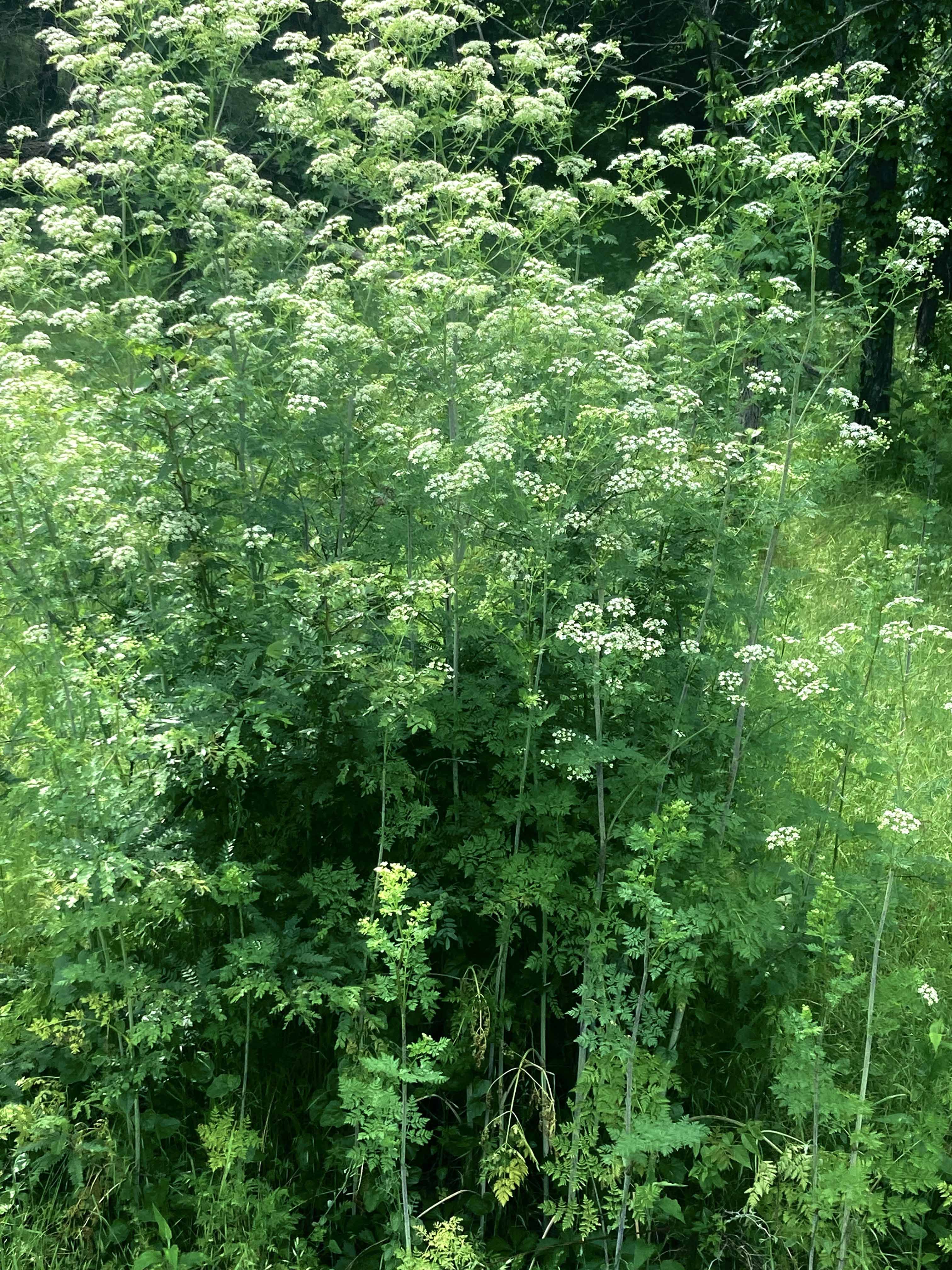Poisonous Plants
Contact
University of Arkansas System Division of Agriculture
Cooperative Extension Service
2301 S. University Ave.
Little Rock, AR 72204

Poisonous Plants
Driving the back roads this spring I have discovered this to be an especially good year for poison hemlock (Conium maculatum). This escaped weed is found in the northern half of Arkansas and across most of the United States. It was the plant used to execute Socrates in Athens in 399 B.C. for the crime of impiety; not showing proper respect for something considered sacred. A closely related plant, water hemlock (Cicuta maculate), is a U.S. endemic found across Arkansas and is every bit as poisonous.
Fear is a funny thing. Close to 4 percent of the calls to poison control centers across the nation are because of plant ingestion, though the number of deaths caused by plants is exceedingly low. Understandably, most of these calls are from frightened parents calling about young children who have chomped on the leaf of a houseplant. About 60 percent of these calls involve children less than one year of age. While there are common houseplants with toxic properties, the dosage required to cause harm is well beyond what a curious toddler would likely consume.
Getting a handle on how many deaths are caused by plant ingestion is tricky, but data from the national poison control network is a good place to start. Between 1983 and 2009, 45 fatalities were reported (less than two per year) and almost all of these were teens and older. Of these fatalities, a third of the deaths were caused by intentional consumption of water hemlock roots (Cicuta sp.) in ill-advised attempts to forage wild food or from Jimsonweed (Datura) in an attempt to attain a barnyard-high from wild plants. In the first decade of the 21st century, one fatality of a child younger than five was reported from plant-related poisoning. If you throw mushrooms into the mix and assume not all deaths are reported through the poison control network, some guess that fatalities can range from 10-60 per year.
Interestingly, the number of plant-related calls to poison control centers has steadily decreased over the decades. During the 1980s when the network began tracking data, about ten percent of the calls involved plants. Some of this may have been a result of widely circulated and sensational press reports of the day reporting on potential poisonous plants around the home and garden. The incidence of plant-related calls has steadily declined over the intervening decades, now dipping to around 4 percent. Calls about possible poisoning of “fur babies” is increasing, no doubt because of the number of internet blurbs on how some houseplants can affect pets.
Poison hemlock is a biennial member of the carrot family that favors moist ditches in sunny or partially shaded sites. In its first season, it produces a taproot and a whorl of carrot-like leaves near the ground. During the second year, it sends up a six-to-eight-foot hollow stem with clouds of white, umbrella-shaped flowers in mid-spring. The plants usually appear in dense stands. All parts of the plant are toxic, especially the roots and seeds.
In 1992 a pair of brothers went foraging in the wilds of Maine and happened upon a stand of the closely related water hemlock. Mistaking the plant for the non-toxic horse parsnip, the younger brother ate three, inch-long bites of the root. The older brother had only one bite. Within the hour the younger brother was dead after his central nervous system shut down and he stopped breathing. His older brother survived. So, yes, poisonous plants can kill but the incidence is still exceedingly rare.
Compared to the more than 60,000 Americans who die from drug overdoses every year, 43,000 killed in car crashes, 4,000 who drown, 700 who die from horse-related accidents, or 30 who die from lightning strikes, plants are relatively safe. Death from tick-borne diseases is also exceedingly rare, averaging less than two per year, but the long-term health impact of these pathogens can be devastating. Overall, the natural world is a place of comfort and solace, not something to be feared.
